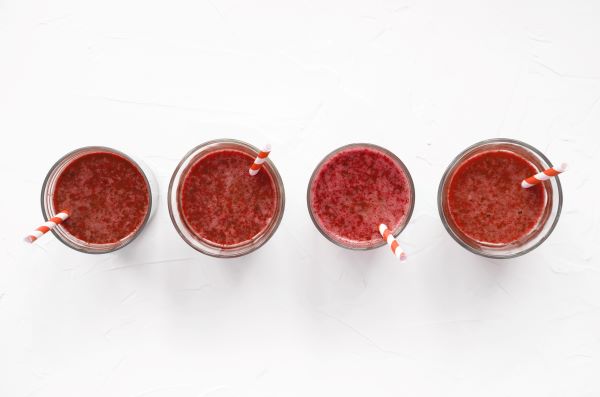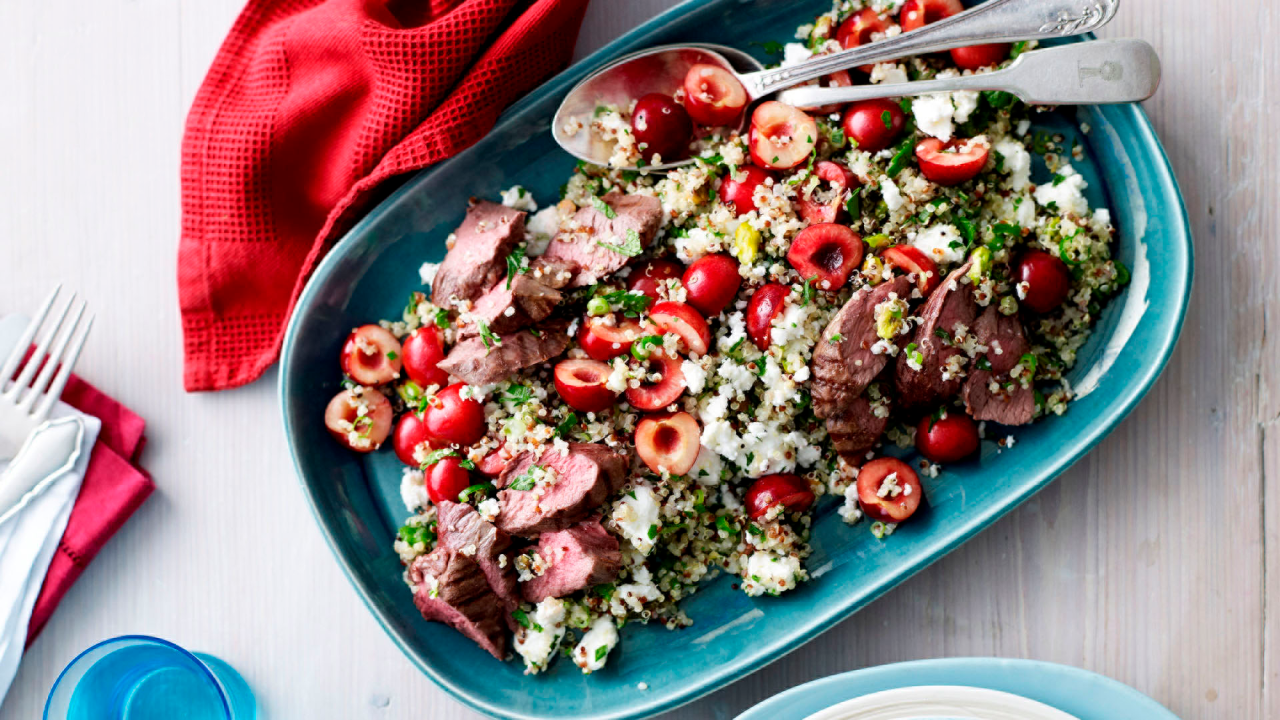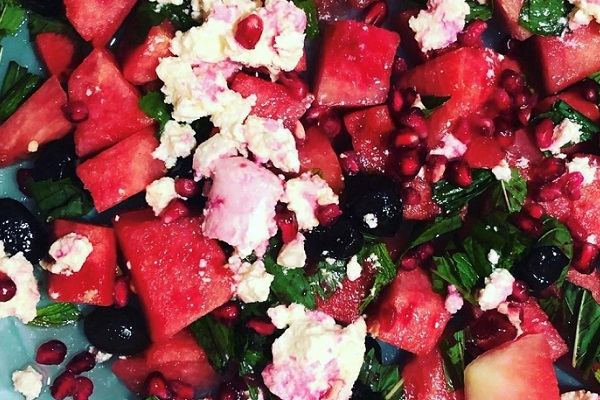-
The world of Instagram, Tumblr and Pinterest is a treasure trove of colourful food and health inspiration. Acai bowls, smoothies in jars, chia puddings, raw energy bars, ancient grain salads – when you’re looking to create a nourishing and vital lifestyle, there’s no shortage of delicious (and very photogenic) ideas to spark your imagination.
Some things become trends for a good reason. The tricky part though is sorting out the hype from the facts. That’s why the Dietitians Association of Australia says it’s important to check in with nutrition experts to get the real story – and to remember that above all, the real secret to health is balance.
“Many nutrition trends have a plus side, but you need to consider each in the context of your overall diet,” says Charlene Grosse, Accredited Practising Dietitian and spokesperson for the DAA.
“Trends will come and go – it’s how you eat day-to-day, over the long term, that will really make a difference to your health.
“At the end of the day, the key is to include as many different healthy foods as possible in your diet. Avoid cutting out foods altogether, unless you have a diagnosed allergy or intolerance. Variety is the spice of life for everyone.”
Here, Charlene takes a look at a handful of popular food trends, and how to incorporate them into a healthy diet.
1. Fermented vegetables
Sauerkraut, kimchee and other fermented foods are having a moment in the spotlight. The fermentation process is said to produce probiotics, which increase friendly gut bacteria.
What dietitians say
Fermented foods can certainly be a healthy addition to a balanced diet, but there’s no need to go overboard.
“In most people the correct balance of friendly bacteria is maintained in the digestive system by eating a variety of healthy foods, such as fruit and vegetables, legumes, wholegrain breads and cereals,” Charlene says.
Tips
“Include fermented vegetables in your diet to boost your overall vegetable intake (something nine in 10 Aussies need to do!).”
2. Green smoothies
Starting your day with a smoothie packed with spinach or kale is a popular way to get in extra vegetables and superfoods – all in a delicious blend that feels like a treat.
What dietitians say
“Green smoothies can be a great way to increase your fruit and vegetable intake, but make sure you include the fibrous parts (such as the pulp),” Charlene says.
“If you’re watching your weight, be mindful of smoothie recipes that contain a lot of kilojoules. Whole or chopped fruit and vegetables also provide fibre, vitamins and minerals – and can be more filling.”
Tips
“Choose primarily whole or chopped fruit and vegetables, including green varieties like kale and spinach. Add a smoothie for variety and to top-up your vegetable intake.”
3. Ancient grains
Ancient grains such as quinoa, spelt, amaranth, wild rice and millet are becoming increasingly popular, often thought to be more nutritious than commonly-used grains such as wheat, oats, rice and barley.
What dietitians say
Choose a mix of nutritious wholegrains to get your energy. “Both ancient grains and more commonly-used grains are great choice,” Charlene says. “The key is to choose wholegrain (rather than white or refined) varieties to maximise fibre, vitamins and minerals, phytonutrients and protein.”
Tips
“Include a variety of whole grains to maximise enjoyment and nutrition. Experiment with ancient grains as a way to boost your overall whole grain intake.”
4. Plant-based milks
A variety of non-dairy milks, such as almond milk, rice milk, soy milk and quinoa milk, are now widely available, providing plenty of choice for those avoiding cow’s milk. Aside from intolerances and ethical reasons for avoiding dairy, some people claim that non-dairy milks can help with improved cholesterol levels and assist with weight management.
What dietitians say
Make sure you’re getting enough calcium with whichever milk you choose, Charlene says.
“Non-cows’ milk can be suitable for vegans and people with lactose intolerance, but research is indicating there are bioactive components in dairy foods, such as milk, that provide health benefits.
“Cows’ milk also provides calcium that is well absorbed by the body. Unless fortified, non-cows’ milks are typically much lower in calcium.”
Tips
“Choose cow’s milk if you enjoy and tolerate it. If you prefer a non-cows’ milk, make sure it is fortified with adequate calcium."
5. Superfoods
From goji berries to kale, there are plenty of foods popularly hailed as ‘superfoods’, said to contain high levels of particularly beneficial nutrients.
What dietitians say
While plenty of these foods are in fact very healthy, be wary of marketing hype. “There is no one food that can sustain us on its own or prevent health problems – we need a variety of foods to give us all of the nutrients we need,” Charlene says. It’s also important to understand that there is no scientific definition of what makes a ‘superfood’.
Tips
“Aim for a ‘super diet’ containing a variety of healthy foods to pack a nutrient punch – and remember to include lots of colour on your plate.”
6. Misshapen fruit and vegetables
Also known as ‘fugly fruit’ or ‘imperfect picks’, strangely misformed fruits and veggies are popular as a cheap and quirky way to get your nutrient fix.
What dietitians say
If you like it, go for it! “Provided they are fresh, misshapen fruit and vegetables contain just as much flavour and nutrition as other fruit and vegetables,” Charlene says. “Choosing ‘fugly fruit’ can also help reduce food waste.”
Tips
“Choose misshapen fruit and vegetables as an affordable option to help meet your daily quota of fruit and vegetables.”
7. Organic foods
Organic foods are often thought to be more nutritious than conventionally-grown produce.
What dietitians say
“Both organic and conventionally-grown foods can part of a healthy, balanced diet – neither is better or worse from a nutrition standpoint,” Charlene says. “Factors such as availability, cost, taste and environmental concerns might also be considered.”
Tips
“Choose organic or conventionally-grown produce, depending on your personal preference.”
Find an Accredited Practising Dietitian at daa.asn.au
7 nutrition trends – and what dietitians really think

-
5 reasons to get your blender out
Soups, smoothies, sauces and more. Here we pay homage to one of the kitchen's most versatile appliances: the blender.
-
10 healthy recipes to enjoy this festive season
Trying to be healthy during the festive season can be tough. We’ve rounded up 10 of our most delicious summer recipes for you to make it easier.
-
Grilled chicken with mango and avocado salsa recipe
The flavour of the mango, lime and coriander work perfectly together to add a taste of summer to any meal.
-
Watermelon, pomegranate and olive salad recipe
You’ll be pleasantly surprised how well these flavours work together. It’s a simple and refreshing salad that will soon become a summer favourite.
-
Mocktail recipes: Five of the best
The same great taste.
-
10 delicious, low-sugar desserts
Naturally sweet ingredients are great for desserts
Subscribe to receive the best from Live Better every week. Healthy recipes, exercise tips and activities, offers and promotions – everything to help you eat, move and feel better.
By clicking sign up I understand and agree to Medibank's privacy policy






